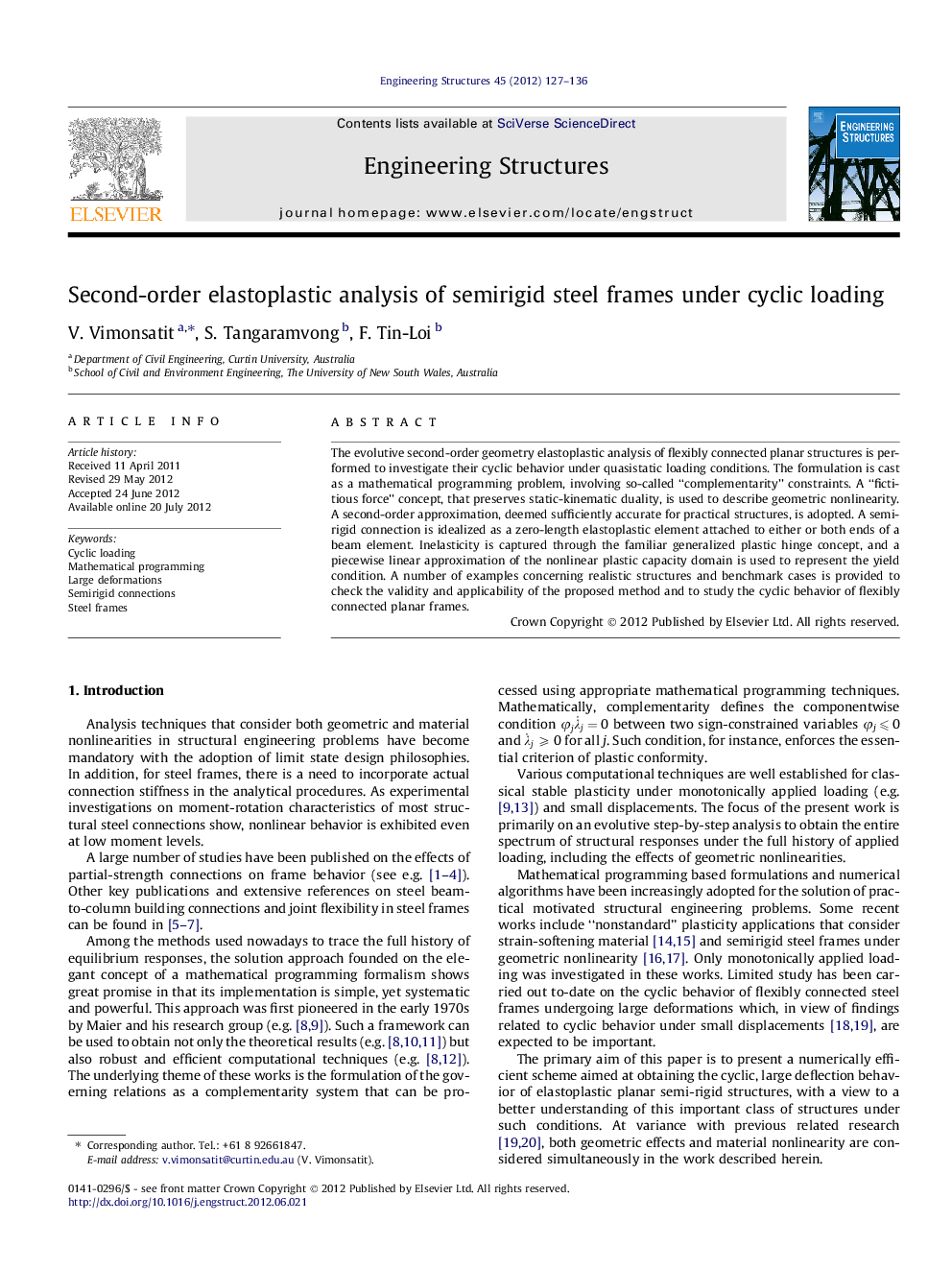| Article ID | Journal | Published Year | Pages | File Type |
|---|---|---|---|---|
| 267116 | Engineering Structures | 2012 | 10 Pages |
The evolutive second-order geometry elastoplastic analysis of flexibly connected planar structures is performed to investigate their cyclic behavior under quasistatic loading conditions. The formulation is cast as a mathematical programming problem, involving so-called “complementarity” constraints. A “fictitious force” concept, that preserves static-kinematic duality, is used to describe geometric nonlinearity. A second-order approximation, deemed sufficiently accurate for practical structures, is adopted. A semirigid connection is idealized as a zero-length elastoplastic element attached to either or both ends of a beam element. Inelasticity is captured through the familiar generalized plastic hinge concept, and a piecewise linear approximation of the nonlinear plastic capacity domain is used to represent the yield condition. A number of examples concerning realistic structures and benchmark cases is provided to check the validity and applicability of the proposed method and to study the cyclic behavior of flexibly connected planar frames.
Graphical abstractCyclic behavior of connection B in a two-bay, one-storey frame, with and without geometric effects. Cyclic behavior of connection at C modelled with different partial-strength properties.Figure optionsDownload full-size imageDownload as PowerPoint slideHighlights► Second-order analysis of semirigid steel frames under cyclic loading is performed. ► Elastoplastic behavior is modeled as stepwise holonomic problems. ► Nonholonomy is traced at the beginning by iteratively scaling the step size. ► The governing system is in the form of MCP solved by predictor-corrector scheme. ► Numerical examples demonstrate the accuracy and highlight the structural behavior.
